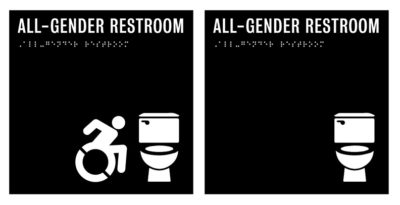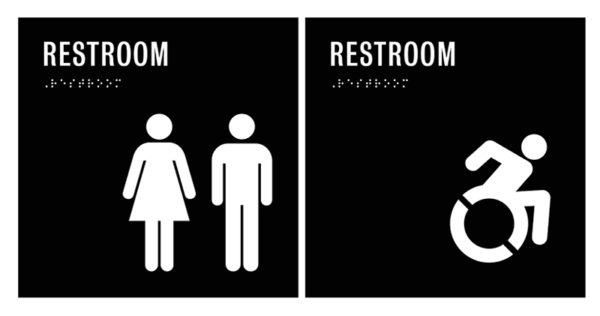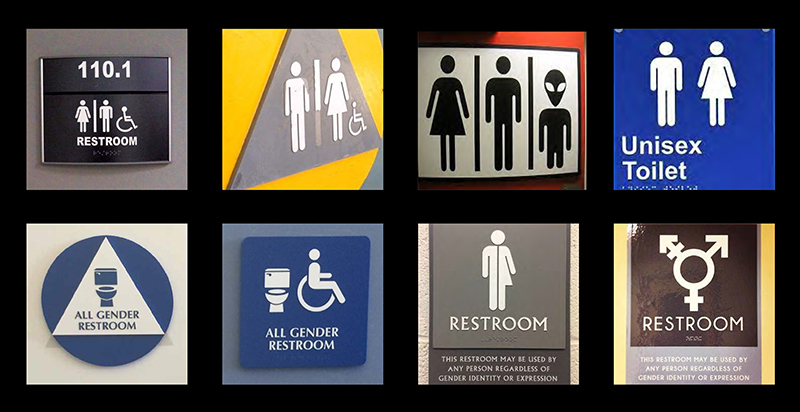
Because she keeps her hair short and wears a tie, History of Art Professor Anna Blume is often mistaken for a man, and when she walks into women’s restrooms, well-meaning strangers often warn her that she’s about to enter the wrong one. She imagined that others in FIT’s diverse community might face even greater discomfort when entering the bathroom of their choice.
So in 2015, Blume approached President Joyce F. Brown to request that FIT create gender-inclusive language and signage on all the restrooms and increase the number of single-occupancy all-gender restrooms. In response, President Brown convened a committee of faculty, students, and staff to envision new, inclusive signs, a move that underscores FIT’s deep commitment to diversity and is in keeping with New York City’s Human Rights Law, which states that people have the right to use public restrooms that are consistent with their gender identity.

The problem with the prevailing restroom symbols—a stick figure of a man and woman—was that many, especially transgender people, don’t see themselves in that traditional, binary framework. Variations on those symbols don’t help much: for example, a half-man, half-woman.
“The very notion of identifying a facility based on who uses it seemed to fly in the face of the New York City mandate,” says Carol Leven, assistant vice president for Communications, who oversaw the project with Rion Byrd, principal of Gumus Design Group, FIT’s signage consultant. “And any attempt at representing people could be offensive.”

Instead, FIT created signage that displays what facilities are in the restroom—namely, toilets. The written labels still include the words, “men,” “women,” and “all-gender”—which is currently preferred to “gender-neutral” because the latter implies a lack of gender. The verbiage from the Human Rights Law is included on the men’s and women’s restrooms, empowering people to choose the one that’s right for them.
The new signage, lacking gendered symbols, does require people to recognize the words “men” and “women.” Might this be confusing to people who can’t read English—for example, some of the hundreds of international students who attend FIT each year?
Possibly, Leven admits, but it seemed acceptable to expect a minimum amount of English from restroom users—and the words themselves are considered almost iconic.
The design was also informed by compliance to the Americans with Disabilities Act. The dimensions, the placement of Braille, and the “active” International Symbol of Access—the person in the wheelchair on the go—were all mandated.
The new signs were rolled out in 2017. As FIT was one of the first in the city to include the New York Human Rights Commission’s language, the signage was featured in a white paper, Bathrooms for Humans: Dignity in Elimination/The All-Gender Toilet Room, by Catherine Joseph and Whitney Odell of architecture firm FXCollaborative.
FIT’s new restroom signage
“Throughout history, the presence or absence of appropriate toilet facilities has served as the strongest signal to particular social groups that they are included or excluded,” they write. “Ultimately, bathroom rights are civil rights.”
As for Blume, she was profoundly moved to see the updated signs and the increased number of all-gender restrooms. “It made me feel more comfortable on a daily basis,” she says, “but even more so, I feel recognized and supported as a polymorphically complex being.”


